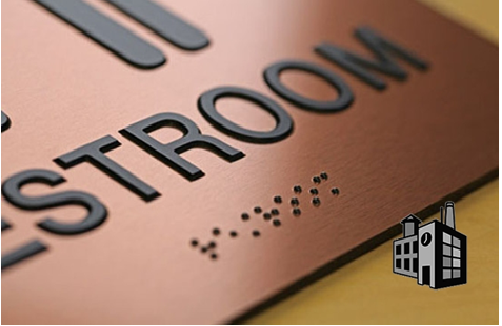
The Americans with Disabilities Act (ADA) mandates that indoor signage must meet certain accessibility and visibility standards. Generally, the rules for ADA signs include:
- Indoor signs must have non-glare backgrounds and characters, so they can be viewed easily by people with visual impairments.
- There must be a dark to light contrast on indoor signs that contain visual characters.
- Indoor signage that is intended to direct and inform (as opposed to identifying spaces and rooms; see below) must use easy-to-read fonts that are in compliance with the 2010 ADA Standards for Accessible Design.
- ADA signs that identify spaces and rooms must be installed adjacent to the door or doorway. It is acceptable to use one sign for both visual and tactile readers, or two separate signs. Note that tactile signs must only use uppercase characters in a sans-serif font that is between 5/8th inches and 2 inches high.
Installing Proper ADA Signage Is The Law
It is critical to remember that installing the right type and a number of ADA signs throughout an office, store, or facility is not just necessary to serve and safeguard employees and visitors — it is the law. Compliance breaches can result in hefty fines levied by the Department of Justice.
Types of ADA Signs
There are many different types of ADA signs, including (but not limited to):
- Restroom signs
- Individual office signs
- Conference room signs
- Mechanical and telecom room signs
- Exit signs
- Stairwell signs
- Elevator and escalator signs
- Exam and procedure room signs
Not all types of indoor signage must be ADA compliant. For example, lobby signs that only display a company’s name or logo (or both) do not have to be designed for visually-impaired viewers.
Learn More
ADA signs are an important part of your indoor signage strategy. To learn more, contact us today to arrange your complimentary signage consultation.
